Horizontal Honing Machine
Product Details:
- Product Type Other
- Power Source Electricity
- Usage & Applications Industrial
- Click to View more
Horizontal Honing Machine Price And Quantity
- 1 Unit
- 1000000.00 - 2500000.00 INR/Unit
Horizontal Honing Machine Product Specifications
- Other
- Industrial
- Electricity
Horizontal Honing Machine Trade Information
- 2 Week
- All India South India Central India West India North India East India Gujarat Karnataka Kerala Lakshadweep Mizoram Meghalaya Manipur Andhra Pradesh Bihar Chandigarh Daman and Diu Goa Jharkhand Odisha Punjab Assam Delhi Dadra and Nagar Haveli Andaman and Nicobar Islands Arunachal Pradesh Chhattisgarh Haryana Himachal Pradesh Jammu and Kashmir Madhya Pradesh Maharashtra Nagaland Rajasthan Sikkim Tamil Nadu Telangana Tripura Pondicherry Uttar Pradesh Uttarakhand West Bengal
Product Description
A Horizontal Honing Machine is a precision machining tool designed to refine the internal surfaces of cylindrical or bore-shaped workpieces. Unlike traditional vertical honing machines, a horizontal honing machine aligns the workpiece horizontally, allowing the honing tool to move horizontally as well. This type of honing machine is commonly used for high-precision applications that require smooth, uniform internal finishes with tight dimensional tolerances. Horizontal honing machines are widely utilized in industries such as automotive, aerospace, hydraulics, and general manufacturing.
Key Features of a Horizontal Honing Machine:
1. Horizontal Orientation:
- Workpiece Placement: The workpiece is positioned horizontally within the machine, which allows the honing tool to operate in a horizontal direction. This setup is particularly advantageous for longer or larger-diameter parts, where vertical orientation might be impractical.
- Improved Access for Long Parts: Horizontal machines provide better accessibility to long parts or bores, enabling more consistent and efficient honing of deeper or extended holes.
2. Honing Tool:
- Abrasive Stones or Brushes: The honing tool typically uses abrasive stones, diamond or CBN (Cubic Boron Nitride) abrasives, which rotate and reciprocate against the surface of the workpiece. These tools help remove material in a controlled manner, achieving the desired surface finish and dimensional accuracy.
- Tool Adjustment: The size and configuration of the honing tool are adjustable to accommodate different bore diameters and lengths, giving flexibility in the type of workpieces it can handle.
3. Feed and Stroke Mechanism:
- Controlled Feed: The honing tool is fed into the bore with controlled speed and pressure, ensuring uniform material removal across the entire bore surface.
- Stroke Length: Horizontal honing machines allow for the adjustment of stroke length, which determines how far the honing tool travels across the workpiece during the honing process. This helps to achieve consistent honing depth and finish.
4. Coolant and Lubrication:
- Coolant Circulation: Honing generates heat due to the friction between the abrasive stones and the workpiece. To mitigate this, a coolant system is integrated to keep the tool and workpiece cool, prevent thermal distortion, and prolong tool life.
- Lubrication: A lubrication system may be used alongside coolant to reduce friction, ensure smooth honing operations, and improve surface quality.
5. Workpiece Clamping and Fixturing:
- Clamping System: The workpiece is securely clamped or fixtured using hydraulic, pneumatic, or mechanical clamping devices to prevent any movement during the honing process. This ensures accurate and repeatable results.
- Support for Long Workpieces: Horizontal honing machines are designed to support longer parts, with adjustable fixturing and support mechanisms to maintain the alignment and stability of the workpiece during the honing cycle.
6. Control Systems:
- Manual or CNC Control: Horizontal honing machines can be operated manually or with advanced CNC (Computer Numerical Control) systems. CNC-controlled machines provide automated and precise adjustments of key parameters, such as feed rate, stroke length, tool pressure, and rotational speed, enhancing consistency and repeatability.
- Real-Time Monitoring: Some machines are equipped with advanced monitoring systems that track parameters in real time, allowing for automatic adjustments and ensuring consistent honing quality.
Advantages of a Horizontal Honing Machine:
-
Suitable for Long and Large Workpieces:
- Horizontal honing machines are particularly effective for honing longer or larger-diameter parts, such as hydraulic cylinders, engine blocks, and long shafts. The horizontal setup makes it easier to handle these types of components compared to vertical honing machines.
-
High Precision and Surface Finish:
- These machines provide a high level of precision, ensuring smooth, high-quality surface finishes with tight dimensional tolerances. The ability to precisely control feed rates, pressure, and tool movement contributes to consistently superior results.
-
Increased Productivity:
- Horizontal honing machines, especially those with CNC control, enable high-speed, high-precision operations, making them ideal for mass production. Their ability to automate most processes reduces the need for manual intervention, improving throughput and overall productivity.
-
Better Tool Life:
- The continuous flow of coolant and lubrication reduces wear on the abrasive tools and minimizes the risk of overheating. The tool™s wear can also be compensated by adjusting the honing parameters, thus extending tool life.
-
Flexibility for Different Part Types:
- Horizontal honing machines can handle a wide range of part sizes and types. The adjustable clamping and tooling systems enable manufacturers to hone both short and long bores efficiently, without the need for significant reconfiguration.
Applications of Horizontal Honing Machines:
-
Automotive Industry:
- Horizontal honing machines are widely used for honing engine cylinders, transmission components, and other automotive parts requiring smooth, precise internal surfaces.
-
Hydraulic and Pneumatic Systems:
- These machines are ideal for honing hydraulic cylinders, piston rods, and pumps, which require smooth, wear-resistant internal surfaces for reliable operation.
-
Aerospace Industry:
- Horizontal honing machines are used for finishing critical aerospace components like actuators, fuel system parts, and other high-performance elements where dimensional accuracy and surface smoothness are crucial.
-
General Manufacturing:
- The machine can be used for a broad range of parts requiring internal bores to be smoothed and refined, such as medical device components, pumps, valves, and precision machinery.
Components of a Horizontal Honing Machine:
- Honing Head: Contains the abrasive honing stones or brushes and applies them to the workpiece.
- Servo or Hydraulic Feed Mechanism: Controls the movement of the honing tool and adjusts feed rates for precise material removal.
- Workpiece Clamping Fixtures: Securely hold the workpiece during the honing process to maintain alignment and prevent movement.
- Coolant and Lubrication Systems: Circulate coolant to maintain tool and workpiece temperature and reduce friction between the tool and part.
- Control System: Either manual or CNC-based, this system allows for the precise programming and control of the honing process.
- Support Mechanism for Long Parts: Provides stability and ensures correct alignment for long or deep bores during honing.
Conclusion:
A Horizontal Honing Machine is an essential tool for industries that require precision honing of cylindrical or bore-shaped workpieces. Its horizontal orientation makes it especially effective for longer or larger-diameter parts, while its ability to achieve high precision and smooth finishes ensures it is indispensable in industries such as automotive, aerospace, and hydraulics. With features like adjustable stroke lengths, controlled feed rates, and customizable tooling, horizontal honing machines provide manufacturers with the flexibility, efficiency, and consistency needed to produce high-quality parts at scale

Price:
- 50
- 100
- 200
- 250
- 500
- 1000+

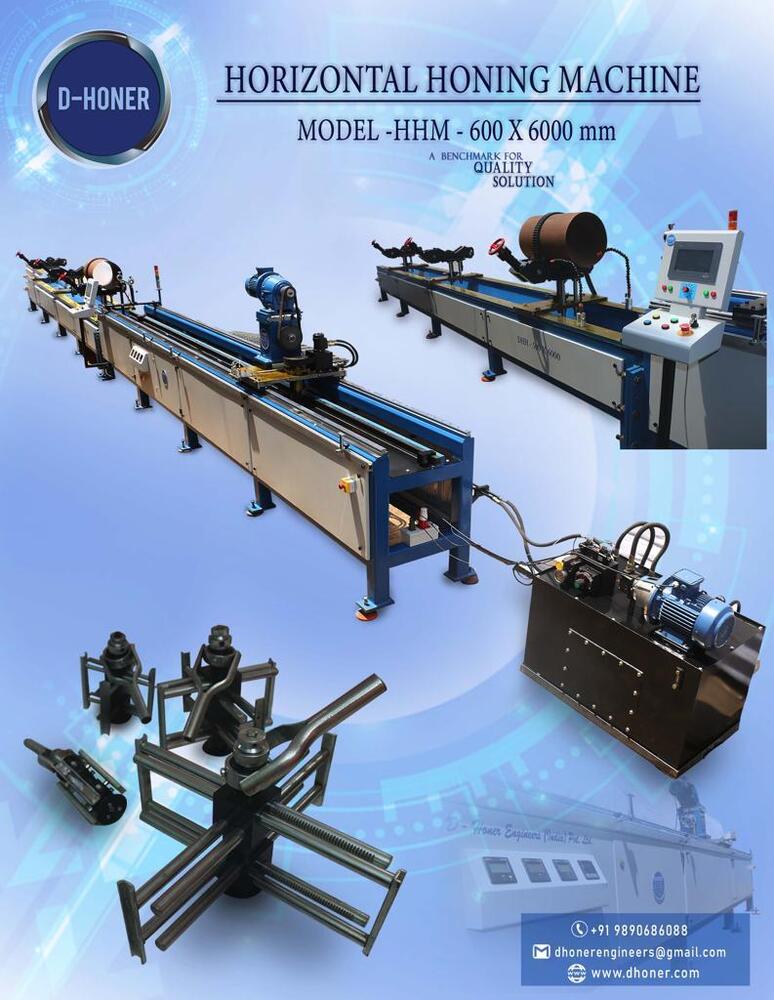
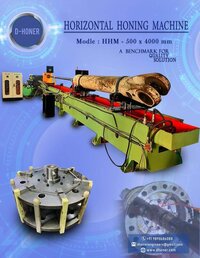


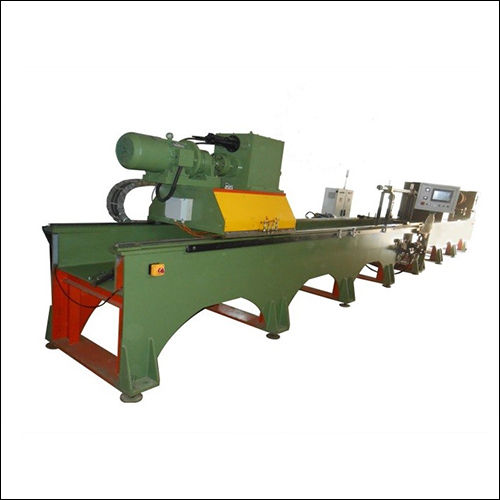
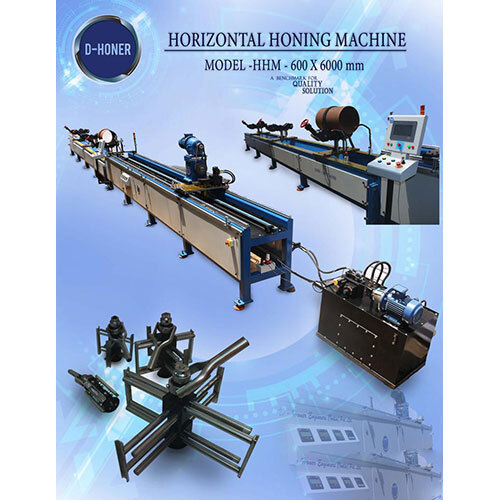
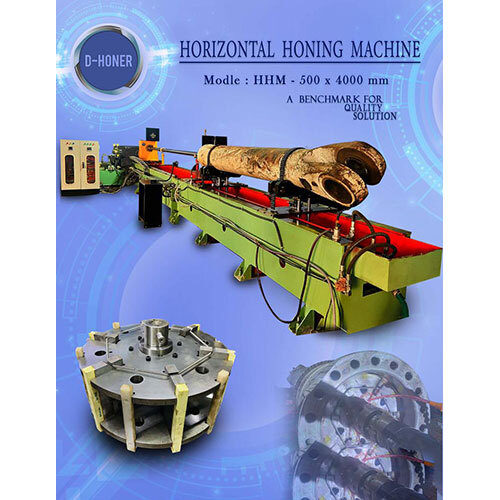



 English
English Spanish
Spanish French
French German
German Italian
Italian Chinese (Simplified)
Chinese (Simplified) Japanese
Japanese Korean
Korean Arabic
Arabic Portuguese
Portuguese